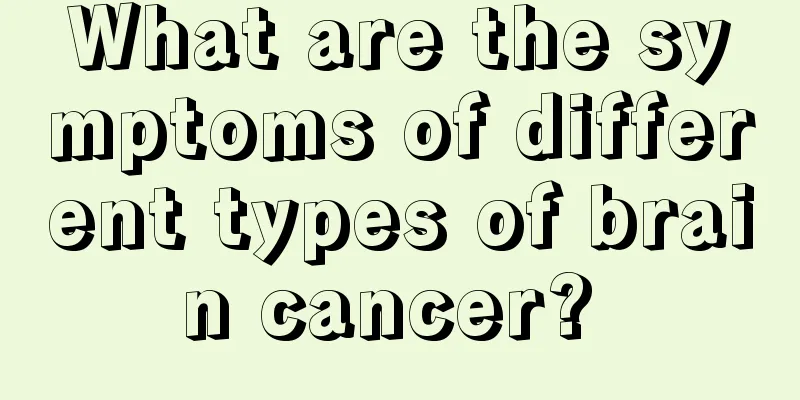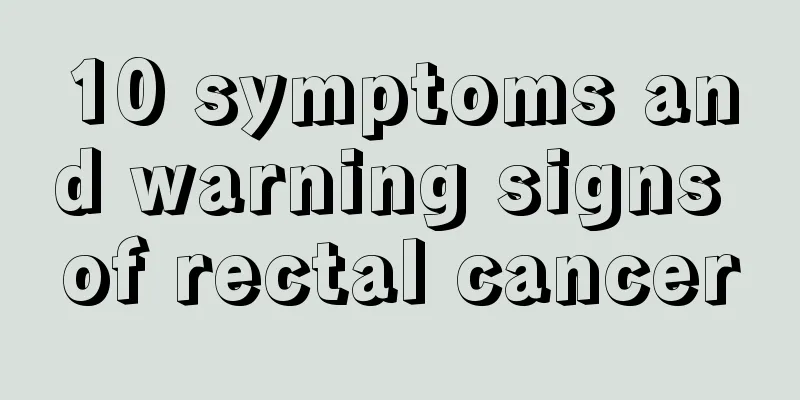What are the symptoms of different types of brain cancer?

|
There are many types of brain cancer. According to the different locations of the tumor in the brain, brain cancer can be roughly divided into several types, such as cerebral hemisphere tumors, sella turcica tumors, pineal region tumors, and posterior cranial fossa tumors. Different types of brain cancer have different clinical symptoms. What are the different clinical symptoms of patients with different types of brain cancer? 1. Clinical symptoms of cerebral hemisphere tumors: (1) Psychiatric symptoms: They are often manifested as slow reaction, laziness, decreased or even loss of recent memory, and in severe cases, loss of self-awareness and judgment. They may also manifest as irritability, irritability or euphoria. (2) Epileptic seizures: including generalized seizures and localized seizures, most commonly in the frontal lobe, followed by the temporal lobe, parietal lobe, and least common in the occipital lobe. In some cases, there are precursors before convulsions. For example, in patients with temporal lobe tumors, there are often precursors such as hallucinations and dizziness before an epileptic seizure. In patients with parietal lobe tumors, there may be abnormal sensations such as limb numbness before an attack. (3) Symptoms of pyramidal tract damage: manifested as weakness or paralysis of the half of the body or a single limb on the opposite side of the tumor, with positive pathological signs. (4) Sensory impairment: manifested as impairment of the position sense, two-point discrimination, pattern sense, texture sense, and entity sense of the limb contralateral to the tumor. (5) Aphasia: divided into motor aphasia and sensory aphasia. (6) Visual field changes: manifested as visual field defects and hemianopsia. 2. Clinical manifestations of sella turcica tumors: (1) Visual impairment: The tumor grows above the sella turcica and compresses the optic chiasm, causing decreased vision and visual field defects. This is often the main reason why patients with sella turcica tumors seek medical treatment. Fundus examination can reveal primary optic atrophy. (2) Endocrine dysfunction: such as hypogonadism, which manifests as impotence and loss of libido in men and prolonged menstruation or amenorrhea in women. Excessive secretion of growth hormone can lead to gigantism before maturity and acromegaly after maturity. 3. Clinical symptoms of pineal region tumors: Symptoms of quadrigeminal compression: They are mainly manifested in two aspects, namely: visual impairment, impaired pupillary response to light and accommodation, tinnitus, deafness; unstable holding of objects, unsteady gait, horizontal eye tremor, incomplete limb paralysis, bilateral pyramidal tract signs; diabetes insipidus, drowsiness, obesity, general developmental arrest, and precocious puberty in males. 4. Clinical symptoms of posterior cranial fossa tumors: (1) Cerebellar hemisphere symptoms: mainly manifested as ataxia of the affected limbs, and may also include weakened or absent muscle tone, sluggish knee tendon reflex, horizontal eye tremor, and sometimes vertical or rotational tremor. (2) Symptoms of the cerebellar vermis: Mainly manifested as ataxia of the trunk and distal lower limbs, with the two feet separated too far apart when walking, a staggering gait, or swaying from side to side like a drunkard. (3) Brainstem symptoms: The characteristic clinical manifestation is crossed paralysis. For example, if there are more midbrain lesions, it will manifest as oculomotor nerve paralysis on the affected side. If there are pons lesions, it may manifest as eye abduction and facial muscle paralysis on the affected side, as well as facial sensory and auditory impairment on the same side. If there are medullary lesions, there may be ipsilateral tongue muscle paralysis, pharyngeal paralysis, and loss of taste in the posterior 1/3 of the tongue. 5. Symptoms of cerebellopontine angle: Common symptoms include tinnitus, hearing loss, vertigo, facial numbness, facial muscle twitching, facial muscle paralysis, hoarseness, coughing when choking on food or water, ataxia on the affected side, and horizontal nystagmus. Progressive symptoms There may be no compression symptoms in the early stages of the tumor. As the tumor grows, clinical symptoms of varying degrees are often manifested. Depending on the location of the tumor and the degree of malignancy, the tumor grows at different speeds, and the degree of symptom progression also varies. Through the introduction in the article, we know that patients with cerebral hemisphere brain tumors will have mental symptoms such as slow reaction, epileptic seizures, hallucinations, dizziness, and limb numbness. Patients with sella turcica brain cancer will have visual impairment, endocrine dysfunction, etc. Patients with pineal region brain cancer will have tinnitus, deafness, and limb paralysis. Patients with posterior cranial fossa brain cancer will have limb disorders, facial muscle spasms, etc. |
<<: Analysis of the pros and cons of radical bladder resection
Recommend
How to extract rose essential oil
In our lives, many people like to apply some rose...
How to remove birthmarks on the belly
Who doesn't want flawless skin? However, the ...
How can I brush my teeth cleanly?
For most people, brushing teeth is a small thing ...
How is right-sided intestinal cancer diagnosed?
Right colon cancer refers to colon cancer that oc...
The significance of preoperative radiotherapy for esophageal cancer
Preoperative radiotherapy is not routine for pati...
Early symptoms and treatment of arthritis
Arthritis is a serious disease problem that often...
How to repair sensitive and red skin?
Skin is one of the most important and largest tis...
The symptoms of colorectal cancer can develop from early stage to late stage
The symptoms of colorectal cancer can develop fro...
How can eye sores be eliminated quickly
Eye sores are thick lumps at the corners of the e...
Can black light harm the body?
Will black light harm the body? In fact, the answ...
Can Moringa seeds lower blood pressure?
Moringa seeds are very natural foods with high nu...
Which flower produces the best honey
We all know that honey brewed from different flow...
When is the best time to drink tea
Today's society is developing so rapidly that...
Could lower abdominal pain be uterine cancer? Women must know the three early symptoms of uterine cancer
The uterus is vital to women and directly determi...
Can advanced liver cancer be cured? Is it necessary to treat advanced liver cancer?
Being diagnosed with advanced liver cancer is und...









